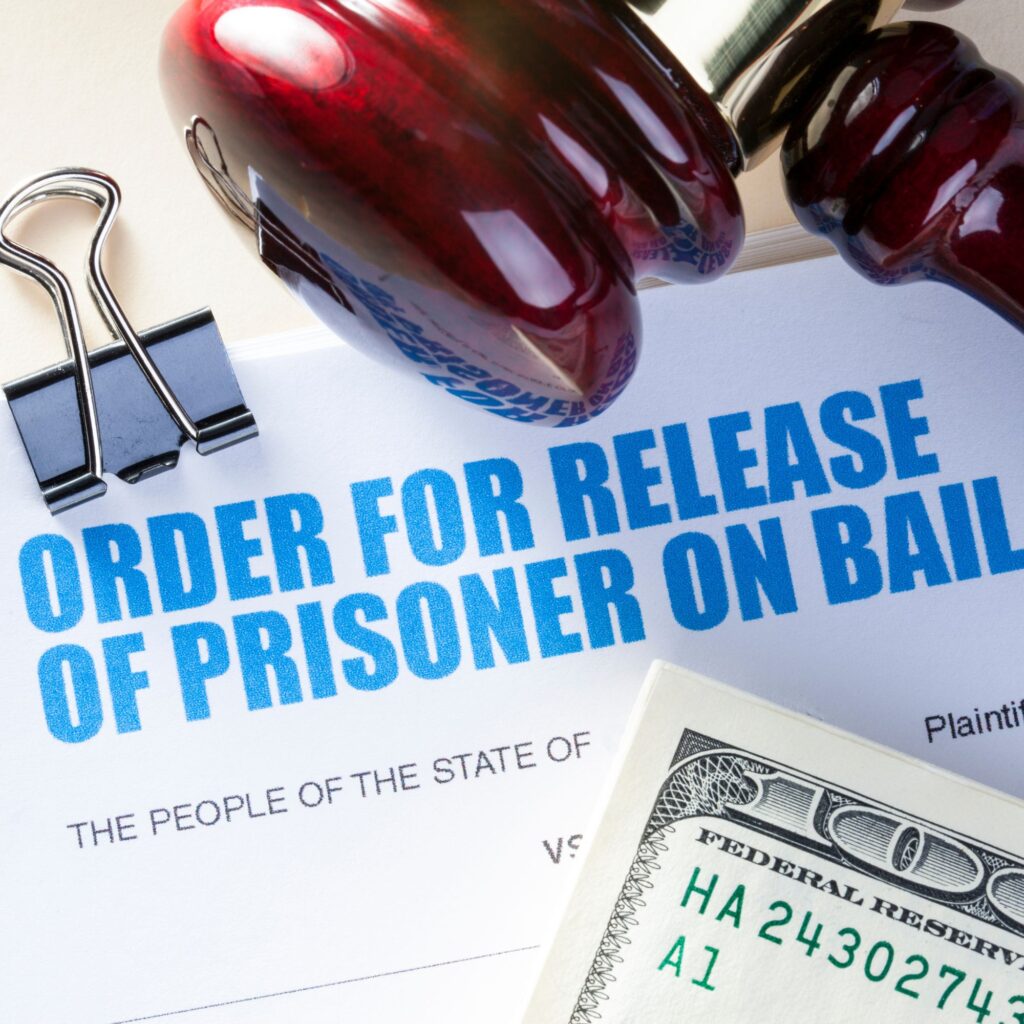Discovering Why Bail Bonds Are Essential in the Lawful Process
Bail bonds serve a critical feature within the legal system, helping with the fragile equilibrium in between individual legal rights and social safety and security. By permitting defendants to safeguard their launch while awaiting trial, these financial tools not just copyright the presumption of virtue yet also mitigate the pressure on correctional facilities (Oceanside bail bonds). This system is not without its intricacies and effects for different stakeholders. Recognizing the complex duty of bail bonds welcomes a closer evaluation of their effect on both accuseds and the more comprehensive justice system. What nuances lie beneath this important element of legal procedures?
Understanding Bail Bonds
In the legal process, bail bonds serve as a crucial system that permits people billed with criminal offenses to safeguard their release from protection while waiting for test. A bail bond is essentially an economic guarantee provided by a third party, generally a bondsman, which makes sure that the implicated will show up in court at the designated times. When a judge sets a bail amount, it reflects the seriousness of the fees and the regarded trip risk of the defendant.
People that can not pay for the complete bail quantity might turn to bail bondsmen, that charge a non-refundable cost, normally around 10% of the total bail. This cost compensates the bail bondsman for thinking the risk of the accused possibly stopping working to appear in court. If the offender does not abide with court looks, the bondsman may employ numerous approaches to locate and nail the person.
Bail bonds play a vital function in the criminal justice system by stabilizing the legal rights of the accused with the demand to make certain public security and court stability. Understanding the technicians of bail bonds is crucial for any individual navigating the complexities of the legal landscape.

The Duty of Bail in Justice
Bail functions as a fundamental pillar within the justice system, balancing the anticipation of virtue with the need to make certain court participation. San Marcos bail bonds. By allowing accuseds to continue to be complimentary while awaiting test, bail recognizes that individuals are innocent until tried and tested guilty. This important principle promotes justness and justice, as apprehension prior to test can exacerbate social inequalities and interrupt lives

Moreover, the bail procedure allows judges to examine the situations of each situation, consisting of the nature of the fees, the offender's history, and neighborhood ties. This customized analysis makes certain that bail decisions are not only punishing yet are instead reflective of the principles of justice and equity, therefore enhancing the stability of the lawful system.
Benefits for Offenders and Households
The advantages of bail expand past the courtroom, considerably influencing accuseds and their families. By securing bail, offenders are afforded the possibility to remain in their areas while awaiting test, which can greatly reduce the emotional and economic stress connected with imprisonment. This flexibility allows people to keep work, support their family members, and accomplish essential responsibilities, eventually adding to their overall wellness.
For households, the ramifications of securing bail are profound. It enables them to stay together during a challenging time, promoting a support group that is essential for psychological resilience. Households can participate in the legal procedure better, as they can speak with lawyers, gather evidence, and plan for court hearings without the included burden of separation.
Furthermore, having a better bail bond a loved one launched on bail can alleviate the financial stress that usually accompanies lawful battles. Family members can designate resources toward legal costs and other requirements browse around this site rather than sustaining costs related to incarceration. On the whole, the schedule of bail bonds works as a vital lifeline for accuseds and their family members, promoting security and unity during a tumultuous period in their lives.
Effect On Court Efficiency
By facilitating the release of defendants before trial, bail bonds substantially improve court efficiency. When offenders have the ability to safeguard bail, they are less most likely to stay incarcerated, which consequently decreases overcrowding behind bars and apprehension centers. This relief of congestion permits police and court employees to allocate resources better, focusing on energetic cases as opposed to managing a stockpile brought on by pretrial detentions.
Additionally, when accuseds are released on bail, they can much better plan for their lawful proceedings. This preparation commonly results in much more enlightened conversations in between the accused and their legal guidance, leading to a much more structured judicial procedure. As offenders are much more most likely to attend court hearings when they are not constrained, the rate of missed court dates lowers, adding to an extra orderly court timetable.
In addition, the timely resolution of cases is promoted as accuseds are encouraged to participate in their tests actively. This not just speeds up the legal process but additionally helps maintain public self-confidence in the justice system. Eventually, making use of bail bonds serves a dual function: ensuring that offenders can take part in their protection while all at once promoting an extra efficient judicial framework.
Alternatives to Bail Bonds
Many choices to conventional bail bonds exist within the lawful structure, each offering distinct devices for pretrial release. One such choice is launch on recognizance (ROR), where accuseds promise to show up in court without the requirement for monetary bail. This choice is typically readily available to people considered low-risk, promoting fairness in the justice system.
One more alternative is using monitored release programs, which include keeping an eye on accuseds via check-ins with a pretrial services officer. These programs might integrate conditions such as curfews or electronic surveillance, guaranteeing compliance and reducing flight threat.
Furthermore, some jurisdictions implement diversion programs that focus on rehab as opposed to punitive steps. Accuseds may join social work or counseling as a problem of their release, dealing with underlying problems while lessening imprisonment.
Last but not least, bail funds established by nonprofit companies provide economic help to low-income defendants, enabling them to safeguard release without the concern of high charges associated with traditional bail bonds. These choices highlight the importance of balancing public safety with the legal rights of the accused, ultimately adding to a more equitable legal procedure.

Conclusion
Bail bonds offer as a fundamental component of the lawful procedure, personifying the principle of anticipation charge and bail of innocence while making sure defendants retain their flexibility prior to trial. By incentivizing court participation and easing prison overcrowding, bail bonds promote much more effective instance preparation.